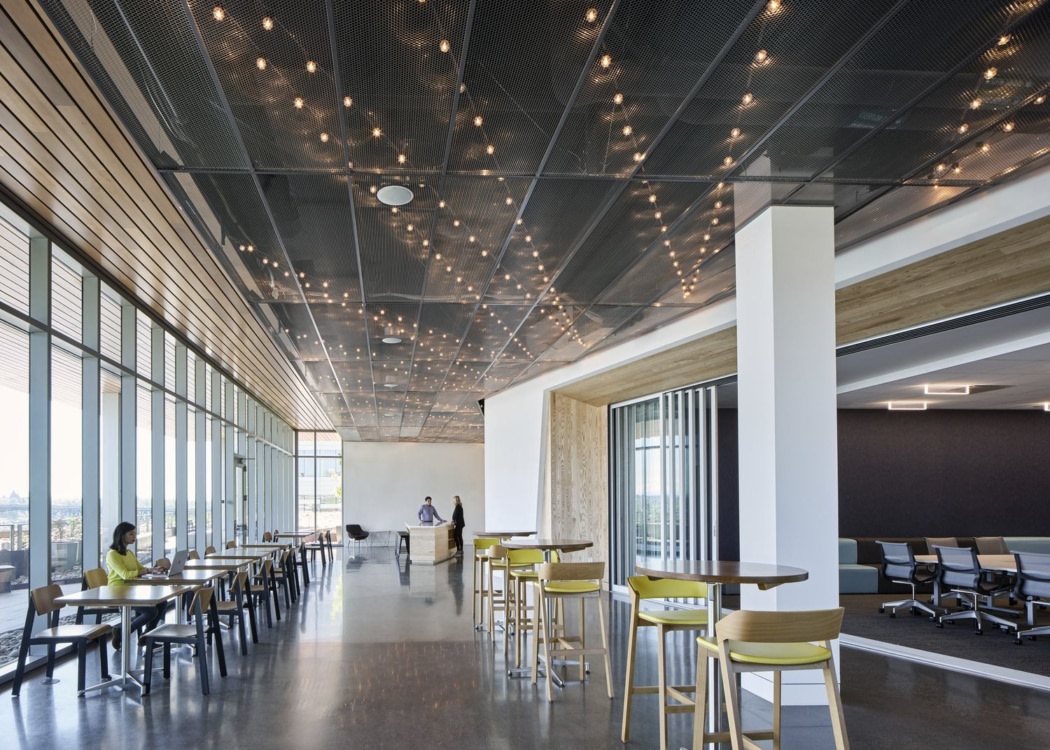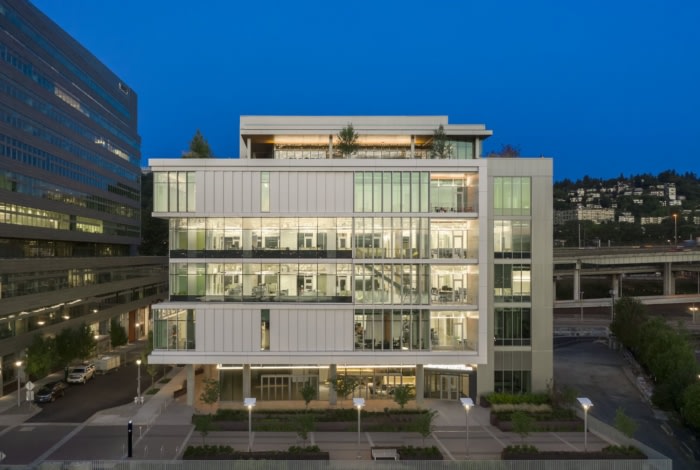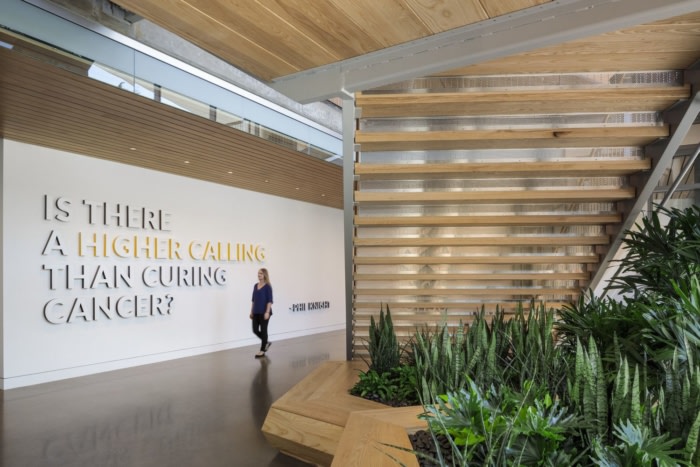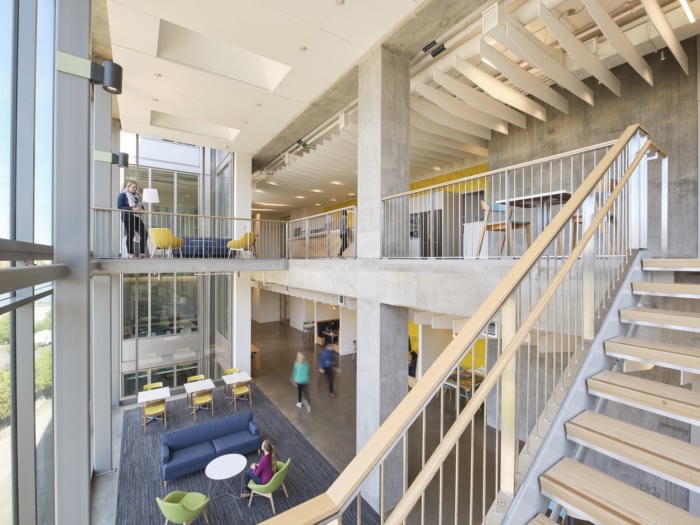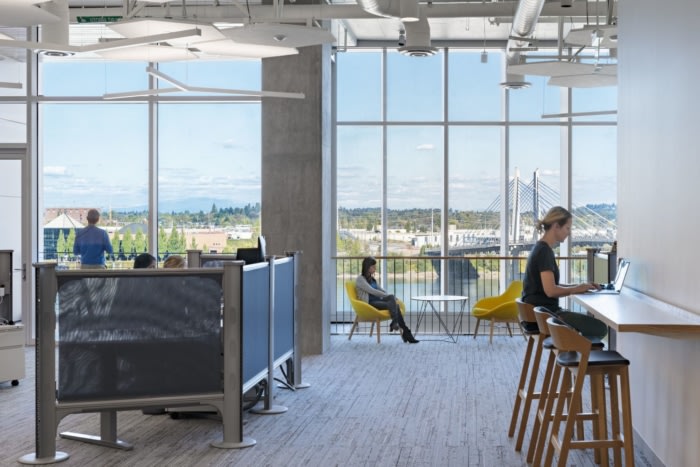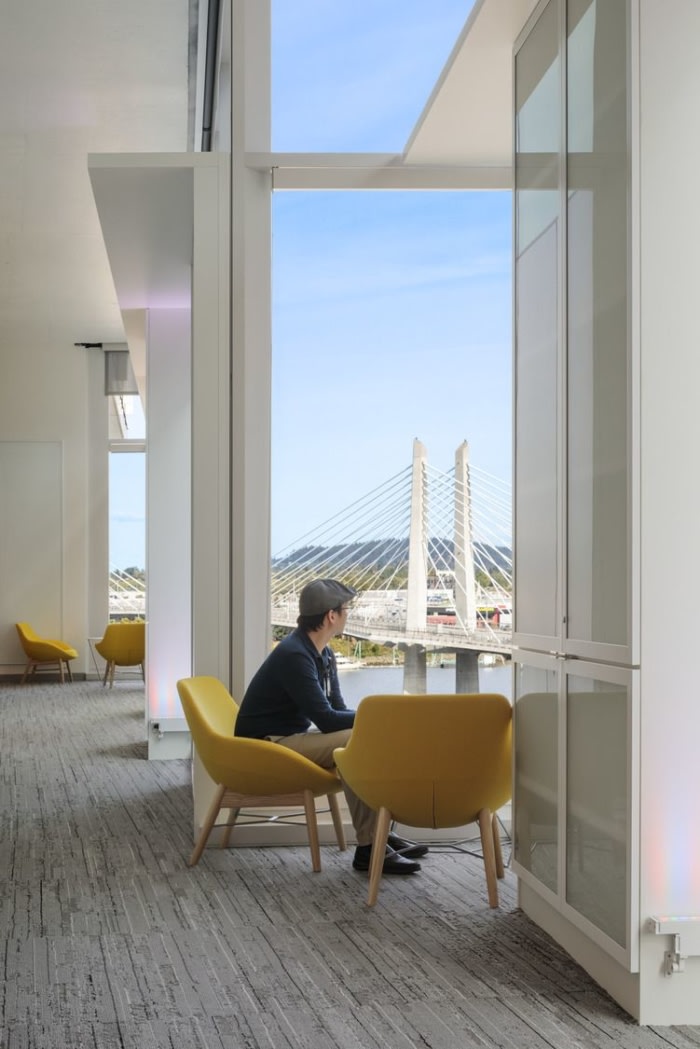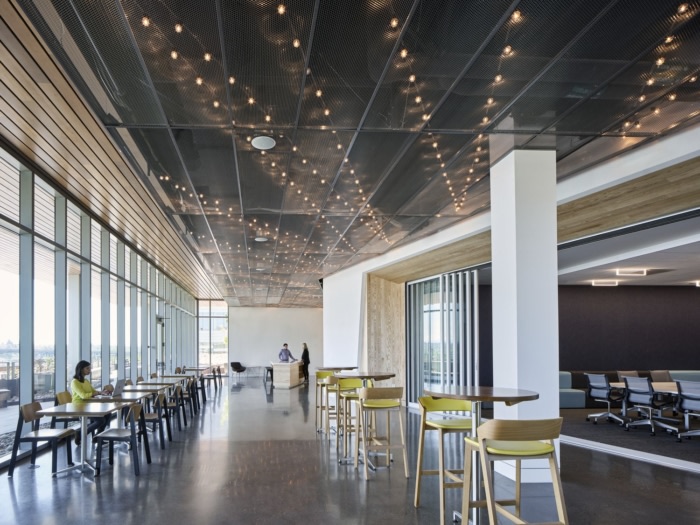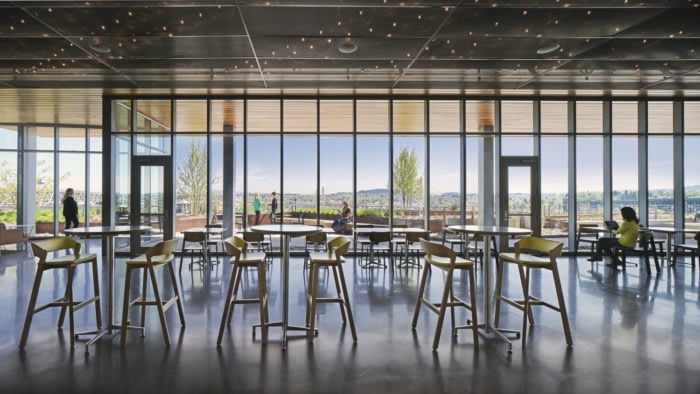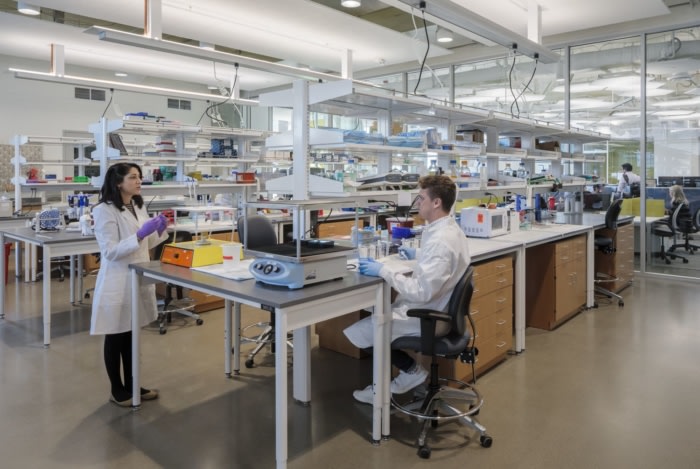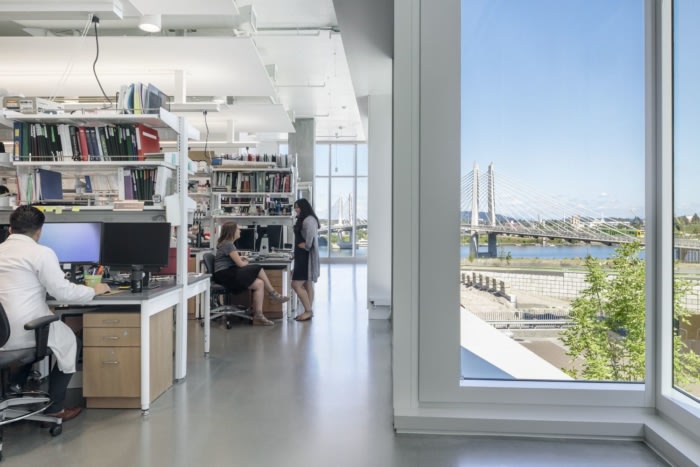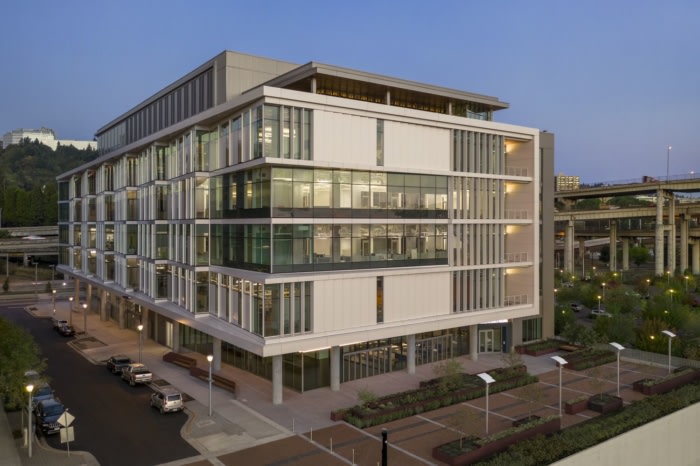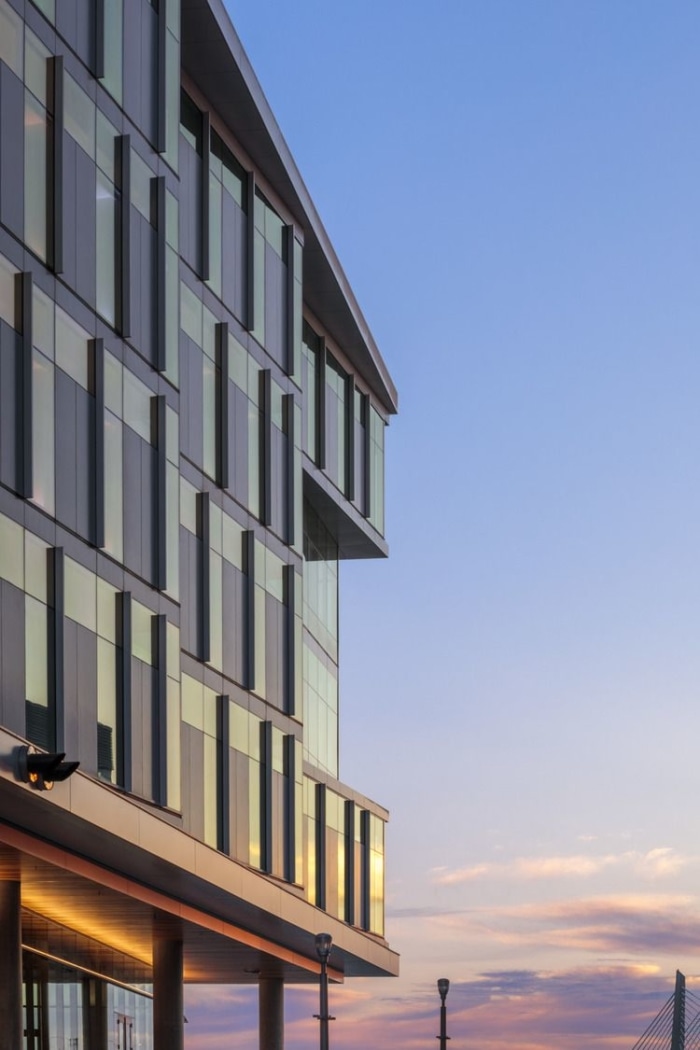Oregon Health & Science University – Knight Cancer Research Building
SRG Partnership completed the Knight Cancer Research Building at Oregon Health & Science University in Portland, Oregon.
The Knight Cancer Research Building (KCRB) at Oregon Health & Science University (OHSU) serves a singular mission: to end cancer as we know it. To achieve this, the Knight Cancer Institute championed a “team science” approach that encourages scientists to work differently, performing interdisciplinary early detection research in an environment upholding collaboration, connections, and shared resources. The KCRB breaks down barriers in order to build up scientists to do their best and most innovative work—all in the name of a cure.
Located on OHSU’s Schnitzer Campus in Portland’s South Waterfront District, the LEED Platinum KCRB sits at the heart of a pedestrian-oriented hub of research and academia served by multi-modal transit. The facility fronts a dedicated campus greenspace facing the Willamette River, strategically sited along the campus’s north-south pedestrian movement corridor. OHSU’s clinical care facilities and the tramway to the University’s Marquam Hill campus are a short walk away.
The KCRB is a research building for all scientists. It overturns the typical model of competing researchers, laboratory siloes, and limited daylight and views for an unprecedented facility that is intentionally integrated, equitable, and connected. This team science approach is what consistently informed the building’s design drivers:
Rather than relegate dry labs to remote corners, an open neighborhood concept defines the KCRB’s research floors; shared team space and wet and dry labs reside side-by-side, connected through a glass wall to enhance visibility and collegiality. The unique design integrates bench research, computational labs, data analysts, and shared core laboratories with advanced technology platforms to create a dynamic research environment. The research areas are compressed to four large floor plates, increasing the population on each floor and promoting connectivity between teams. These lab floors are elevated above the ground plane, allowing a publicly accessible first floor to reinforce campus circulation and serve the community through a ground-floor conference center and retail.
To foster team science the KCRB provides diverse social and gathering spaces throughout the building where researchers can spontaneously engage, exchange ideas and collaborate. These are often the spaces in which unexpected collaboration happens—a central kitchen, an auditorium, an informal seating area. A social lounge and rooftop terrace draw the entire Knight community, inspiring users with expansive views of the city and mountains beyond.
A primary spine running along the building’s north side links numerous open stairs and social hubs throughout the floors. This vertical connectivity allows the KCRB’s generous floor plates to feel intimate and transparent, contributing to a collaborative social work environment that draws people out and fuels creative discovery.
Team science drove a non-hierarchical design in the laboratories, characterized by neighborhoods connected through circulation spines and dedicated areas sharing scientific resources to cross-pollinate research. Connections to daylight and views are available to all, number-crunching computationalists and principal investigators alike. Clearly expressed in the envelope design, the research floors are framed in a metal panel enclosure featuring a sawtooth-shaped configuration of windows along the south elevation. The sawtooth design directs views to the Willamette River and Tilikum Bridge, while continuous clerestories and rhythmic vertical view windows optimize daylight penetration and glare control. Indoor-outdoor connections are furthered by balconies, expansive glazing at view opportunities, and operable glass wall systems at the ground-floor retail space.
Today more than 200 world-class scientists have been recruited to the Knight Cancer Institute, drawn to the KCRB’s team-based work environment to further the mission of curing cancer.
Architect: SRG Partnership
Photography: Brad Feinknopf, Christian Columbres

